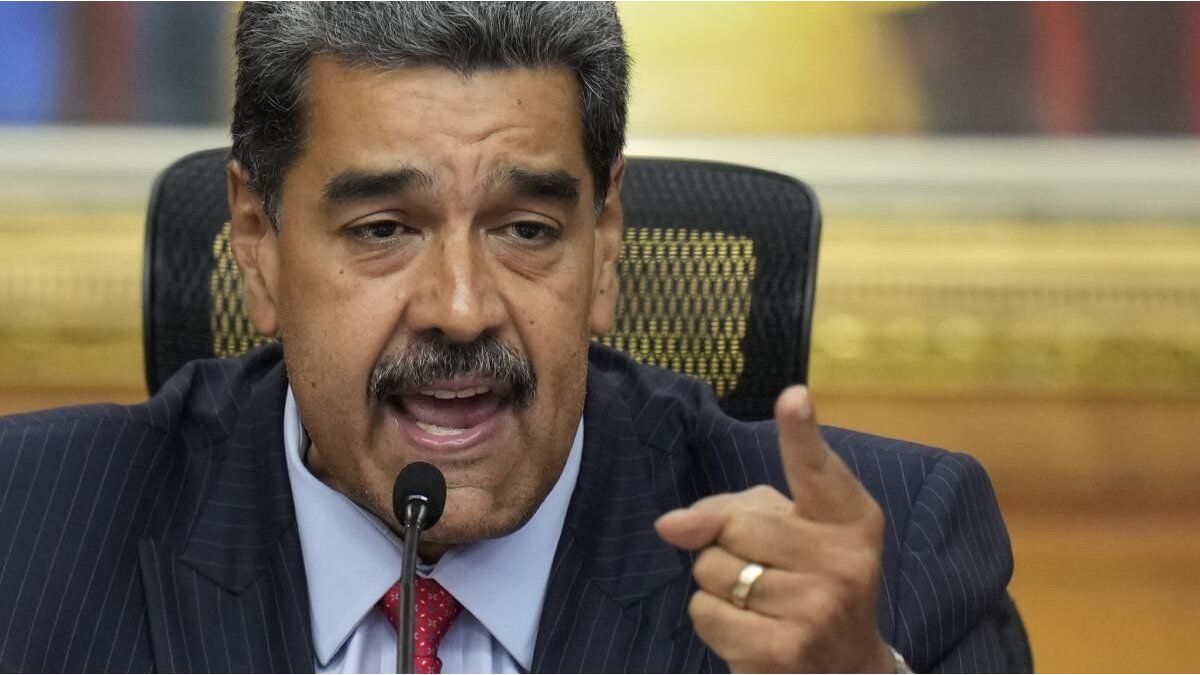Image: MOHAMMED ABED (AFP)
1. Wars and uprisings
The State of Israel was founded on May 14, 1948. Since then, a total of six wars have shaken the region: the War of Independence in 1948-49, the Suez Crisis in 1956, the Six-Day War in 1967, the Yom Kippur War in 1973 and the Lebanon Wars in 1982 and 2006.
After the founding of the State of Israel, five Arab states attacked Israel, and the first Middle East War began. As part of a ceasefire agreement in 1949, Jordan took control of East Jerusalem and the West Bank and Egypt took control of the Gaza Strip. Israel also conquered these areas in the Six-Day War in 1967. UN Resolution 242 called for Israel to withdraw from the occupied territories.
Two Palestinian uprisings (1987-1993 and 2000-2005) also resulted in many deaths on both sides. Since 2008, Israel has also repeatedly engaged in armed conflict with the Islamist Hamas, which rules in the Gaza Strip, and other militant Palestinians.
2. Peace agreements and rapprochements
Israel is officially still at war with its two northern neighbors, Syria and Lebanon. Egypt was the first Arab country to sign a peace treaty with Israel in 1979, and Jordan took the same step in 1994. In 2020, the United Arab Emirates and Bahrain became the first Gulf states to sign rapprochement agreements with Israel. As part of the so-called Abraham Accords, Morocco and Sudan also announced normalization of their relations with Israel. There are currently talks between Israel and Saudi Arabia under US mediation.
3. The Palestinian Territories
The Palestinian Territories are a term for the West Bank, the Gaza Strip and the Arab-dominated eastern part of Jerusalem, which was conquered by Israel in 1967 and later annexed. The Palestinians demand these areas for a future independent state. Because her life has so far been largely determined by others.
Until 1918, historic Palestine – an area between the Jordan River and the Mediterranean Sea – was part of the Ottoman Empire for four centuries. Britain then took control as a mandated power. In 1947, a UN plan called for the area to be divided into a Jewish and an Arab state. This was accepted by the Zionist leadership but rejected by the Arab side.
As part of the peace treaties between Israel and the Palestine Liberation Organization (PLO) signed after 1993, the Palestinians achieved partial autonomy in the Gaza Strip and West Bank. For the Palestinians, the central goal was always their own state. However, the desired expansion of the Palestinian autonomous areas did not materialize and the peace negotiations ultimately failed in 2014.
4. The Palestinian Authority
The Palestinian Authority (PA) was founded in 1994 on the basis of the peace agreements between Israel and the PLO. It is responsible for basic services such as the supply of water and electricity, the school system and garbage collection. But it also issues documents such as passports, birth and death certificates and driving licenses. The Palestinian Authority’s main donor is the European Union.
The first Palestinian president was Yasser Arafat, and after his death in 2004, Mahmoud Abbas became PLO chief. The following year, Abbas was directly elected president by the people. His term expired in 2009 and there was no election after that. The last parliamentary election took place in January 2006, when Hamas won. The four-year legislative period expired in 2010. Since then there has been no democratically legitimized leadership. A new election has been announced several times but has not yet taken place due to ongoing disputes between Abbas’ Fatah movement and Hamas, which rules the Gaza Strip.
5. The Israeli settlements
After conquering the West Bank and East Jerusalem, Israel began systematic settlement of the area. In 1980, Israel annexed East Jerusalem. There were also 21 Israeli settlements in the Gaza Strip, but these were completely evacuated as part of the Israeli withdrawal in 2005. In addition to the approximately three million Palestinians, there are now also around half a million Israeli settlers living in around 200 settlements in the West Bank, and together with East Jerusalem there are even 700,000 settlers.
Under international law, states are not allowed to resettle their own civilian populations into occupied territory. At the end of 2016, the UN Security Council called on Israel to completely stop settlements in the occupied Palestinian territories, including East Jerusalem. Settlements were described in UN Resolution 2334 as a violation of international law and a major obstacle to peace in the Middle East.
Israel, on the other hand, is of the opinion that the West Bank, which it conquered in 1967, was not previously a state but was only controlled by Jordan. Israel also invokes the League of Nations Mandate for Palestine of 1922, which confirmed the historic rights of Jews to the land. The settlers also do not see themselves as foreign bodies in the West Bank. According to their understanding, they live in Judea and Samaria, the land of their forefathers.
6. The Gaza Strip
The Islamist Palestinian organization Hamas has de facto ruled the Gaza Strip since 2007. It is classified as a terrorist organization by Israel, the EU and the USA. Israel and Hamas have already fought three wars: in 2008/2009, 2012 and 2014. Thousands of people were killed. Palestinian militants in the Gaza Strip repeatedly fire rockets at the Israeli border area and send incendiary and explosive balloons. Israel usually responds to this with attacks on Hamas targets. Israel tightened a blockade of the Gaza Strip in 2007, which is now supported by Egypt. Both countries justify the measure with security considerations. Around two million inhabitants live in very poor conditions in the coastal strip on the Mediterranean.
7. Palestinian refugees
After the founding of the State of Israel, five Arab states attacked Israel, and the first Middle East War began. It led to the flight or expulsion of around 700,000 Palestinians from their homeland. As part of a ceasefire agreement in 1949, Jordan took control of East Jerusalem and the West Bank and Egypt took control of the Gaza Strip. Israel also conquered these areas in the Six-Day War in 1967. UN Resolution 242 called for Israel to withdraw from the occupied territories.
According to the UN, the number of registered refugees, including their descendants, is around six million. Many of them live in camps in Lebanon and Syria, but there are also refugee camps in Palestinian-controlled areas to this day. The United Nations Relief and Works Agency for Palestine Refugees (UNRWA) has been looking after the refugees since 1948.
The refugee problem, along with the dispute over the future status of Jerusalem, is one of the most complicated questions in the Israeli-Palestinian conflict. While the Palestinian leadership demands the right of refugees to return to their old homeland, Israel rejects this.
My themes
For your saved topics were
new articles found.

info By clicking on the icon you can add the keyword to your topics.
info
Click on the icon to open yours “my themes” Page. They have of 15 keywords saved and would have to remove keywords.
info By clicking on the icon you can remove the keyword from your topics.
Add the topic to your topics.
Source: Nachrichten




